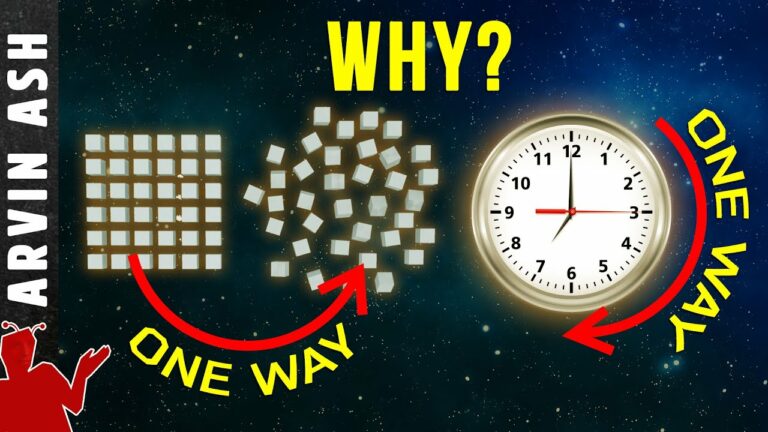The Startling Reason Entropy & Time Only Go One Way!
What drives natural phenomena? Why does entropy only increase or stay the same. Why does a pencil on its tip fall to the table?
Things always tend towards their lowest energy state. Why is nature driven this way?
A simple way to think of entropy is disorder. But what’s driving this disorder? What is the underlying cause of higher entropy?
Whenever something happens, some kind of change has to occur. Properties like speed, mass or temperature change. Physics defines the rules that allows us to predict these changes.But if something can change from say configuration A to configuration B, then why shouldn’t the reverse also be allowed from B to A?
When a ball rolls down a hill from a certain height, it should be able to roll back up to the same height. If energy is conserved, then all its potential energy when it is on top of the hill is converted to kinetic energy at the bottom. And this kinetic energy should completely convert back to potential energy, back to the height that the ball originally started from. But this is not what happens. it is irreversible. We can scramble an egg, but we can’t unscramble it.
Conservation laws can’t answer the question why there is a preferred direction to any particular change. Things move in a particular direction as time moves forward. The reason is not as mysterious as it might sound. It all has to do with probability.
If we hold a pencil on its tip and let it go, it will fall and lie horizontally. Why did this happen? When it was held up, it had a high potential energy. When it hit the table, that kinetic energy was transferred to the table and air in the form of heat and sound. Energy is conserved. Buy why did this transfer of energy happen? Why doesn’t the reverse happen? Why doesn’t the energy of the air and heat configure itself in such a way that it results in the pencil standing up. Energy would be conserved in that case too.
What’s really happening is that although energy is conserved, the type of energy has changed. Useful energy has converted to less useful energy. When a system is at a high energy state, it has more energy available to do work. When the pencil was standing on its tip, it had more potential energy. It had more ability to do work. After it hit the table, it had less energy available to do work.
The energy that transferred to the table and air in the form of heat and sound is less useful. The same thing can be applied to a boulder falling from the top of a mountain to the bottom.
The real question is why do some systems tend to transfer their energy to other systems? This is where probability comes in. When the pencil is standing up, there was just a single way you could arrange the potential energy of the atoms that comprise the pencil. Once the pencil has transferred this kinetic energy to the movement of atoms on the table and air in the form of heat and sound, there is an innumerably large number of ways that you could divide up that energy among all the atoms in the surrounding air and table.
So while there are just a few ways that energy can go towards the motion of the pencil, there is a very large number of ways in which that energy could be distributed to the motions and vibrations of atoms in the surroundings. If we assume that the any possible distribution of energy is equally likely, then the case with a mind-bogglingly large number of possibilities is much more likely to occur. In fact, it will occur virtually all the time, and the case with just a few possibilities, basically would never occur.
Increasing entropy might actually be giving a meaningful definition to the flow of time in our universe. One way to think of time is as things changing. And since things are always changing in the higher entropy direction, we can distinguish higher entropy with the forward movement of time. If there were no change, then perhaps there would be no time.
Do not forget to share your opinion with us to provide you with the best posts !




0 Comments